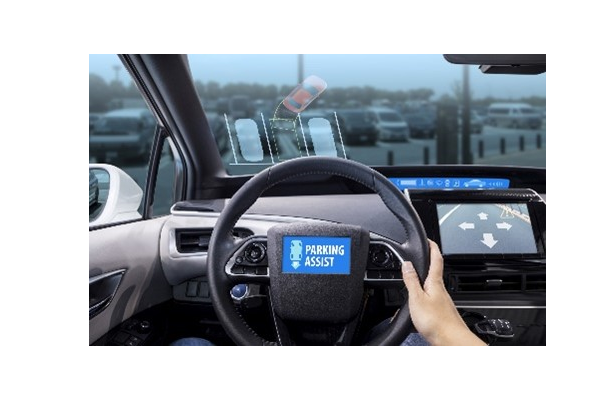|
|
 |
May 19, 2022 – The City of Tulsa had received a message on its server that said, “We have compromised your server, contact us on the dark web at this address so we can negotiate terms for you to pay a ransom.” The message linked to images that showed hackers had access to their data.
It took three weeks for FBI officials, Microsoft teams and internal IT professionals to identify the hackers and months to fix the problems they caused. Fleet Maintenance Manager Mike Wallace’s team shifted to a paper-based system in the meantime.
Most fleets have a disaster recovery plan for floods, tornadoes, other natural disasters, and now even for pandemics. But most still lack data recovery plans, he adds. “I wouldn’t want any other fleet to go through this. It was an interesting couple of months,” Wallace concludes. “Put things in place to be ready for it.”
via HDT Trucking Info
|
May 19, 2022 – In 2018, there were 1,298 catalytic converter thefts for which a claim was filed. In 2019, it was 3,389 thefts with a claim. In 2020, catalytic converter theft claims jumped massively to 14,433, a 325% increase in a single year.
The “Preventing Auto Recycling Theft Act,” or PART Act, is the first congressional bill to address the growing national problem of catalytic converter thefts, which are costing businesses and vehicle owners millions of dollars annually, according to NADA, which notes the bill has support from both Democrats and Republicans.
The PART Act will require that new vehicles have unique identifying numbers stamped on catalytic converters during assembly, as well as establishes a federal criminal penalty for the theft, sale, trafficking or known purchase of stolen catalytic convertor, supporters of the bill noted.
via The Detroit Bureau
|
May 18, 2022 – A new study out of the UK found that women are almost twice as likely as men to be trapped in a vehicle after a crash. Women suffered more hip and spinal injuries, whereas men sustained more head, face, chest and limb injuries.
Researchers say this also may be linked to why women are more likely to be trapped in a vehicle as injuries to the pelvis can make it harder to escape a wreck by oneself.
via CTVNews
|
May 22, 2022 – Everybody loves powerful cars, although not everybody has the skills required to tame a supercar.
Looking at Tesla’s lineup, the Model 3 RWD, with a 0-60 mph (0-96 kph) acceleration time of 5.8 seconds. Kia EV6, in its least powerful version, makes 0-62 mph (0-100 kph) in 6.2 seconds. Electric trucks are more or less the same, with the slowest of them making 0-60 in under 5 seconds.
Even if everybody has incredible driving skills today, this will not last. Eyesight diminishes with age, the field of view narrows, and the reaction times get longer. There will be a growing discrepancy between driving skills and car performance, leading to more problems.
via AutoEvolution
|
|
|
Minimizing Traffic Deaths
|
|

May 18, 2022 – The National Highway Traffic Safety Administration released preliminary data on the traffic fatalities recorded across the country in 2021. Fatalities rose to nearly 43,000 in 2021, a 10.5-percent increase over 2020.
Over 90 percent of Americans use a seatbelt – the remaining 10 percent make up nearly half of those who die in crashes. The technology exists to force drivers to obey the speed limit. It’s existed for as long as cars have been around and admittedly, drivers hate the very idea. Requiring breathalyzers in every newly-built vehicle could take decades to truly make a difference in road deaths.
The uncomfortable truth is, we could all but eliminate deaths via drunk driving, speeding and lax seat belt use — nearly half of all car crash fatalities — with technology that has been readily available for decades. But we don’t, because they present, at worst, a mild inconvenience.
via Jalopnik
|
|
| |
Automated Driver Assistance Systems
|
|

By Art Liggio, Chairman, Driving Dynamics
Numerous reports and warnings regarding the efficacy of Automated Driver Assistance Systems (ADAS) to keep drivers safe have been published over the past few years by leading road safety groups such as U.S.-based AAA Traffic Safety Foundation and Thatcham Research in Europe.
Unfortunately, the cautionary messages, pointing out the shortcomings and failure points, of ADAS seem to have been overshadowed by the persuasive and persistent marketing campaigns suggesting that operating a vehicle can be more effortless than ever and will require little to no driver interaction.
For example, a recent television commercial showed the driver and passengers playing a game, with everyone clapping hands while executing a pass of another vehicle.
Seriously, is this how any driver should be encouraged to operate a vehicle?
READ MORE
|
|

By Ben Forgan, CEO, Hologram, Inc.
Managing fleets can be like juggling chainsaws – a bit stressful! It means balancing costs, keeping drivers and vehicles operating safely, and ensuring compliance.
However, introducing IoT (or the Internet of Things) into the management mix can alleviate some of the challenges and risks that fleet managers face.
While the details can get complicated, the overall concept of IoT for fleet management is pretty straightforward: IoT is technology that enables hardware (telematics systems) and software (remote applications) to exchange information that helps fleet managers assess situations and make adjustments.
In simplest terms, what’s needed to employ IoT?
READ MORE
|
|
|
|

